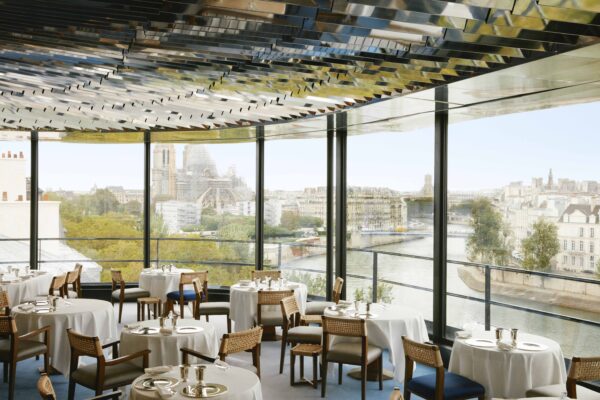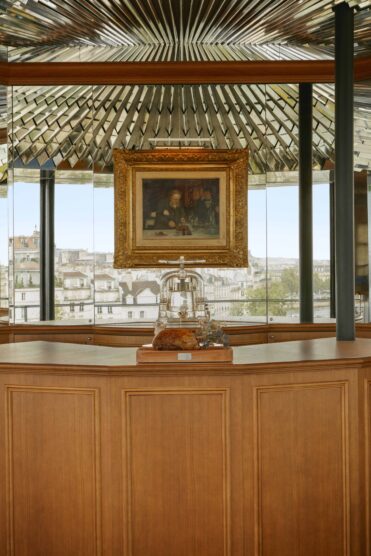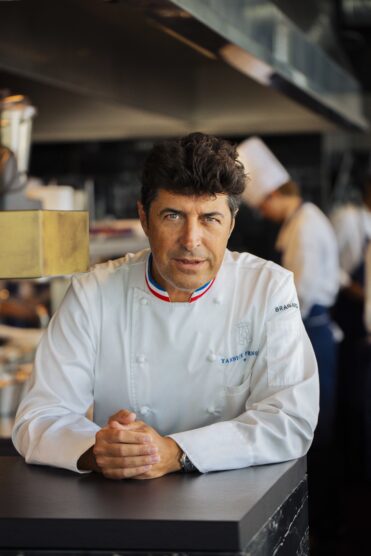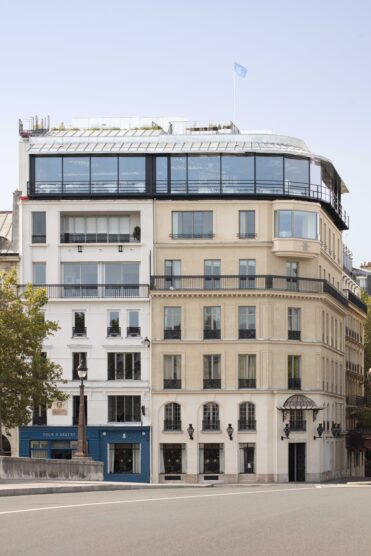Reimagining a Centuries-old Parisian Restaurant for the Modern Diner
La Tour d’Argent, one of most famous restaurants in Paris, reopens its doors.

Paris’s iconic La Tour d’Argent has emerged from a major 12-month refurbishment that has breathed new life into 15 Quai de la Tournelle.
The restaurant, which first opened back in 1582 as an inn for the king’s noblemen, is now under the care of third-generation owner André Terrail, whose grandfather, also André, bought it in 1910 with the intention of making it the most famous restaurant in the world. Now that it is one of the the most famous restaurants in Paris, the current André wanted to bring the centuries-old restaurant into the 21st century with its first renovation since 1936.



Terrail worked with architect Franklin Azzi to reimagine the restaurant for the modern diner whilst retaining the La Tour spirit. Removing the dining room pillars has opened up the space and maximized the view of La Tour’s neighbour, Notre-Dame. This famous view inspired artist Margaux Lavèvre, who designed the Pierre Frey carpet in La Tour’s signature blue to represent the flow of the Seine below. The hessian-yarn-backed chairs by Franklin Azzi feel surprisingly informal but were inspired by the dining chairs that furnished La Tour in the 1930s, whilst the striking pleated metallic ceiling meets the contemporary brief. Various artworks adorn the restaurant and the bathrooms, but the standout is a colourful fresco by contemporary artist Antoine Carbonne, painted just days before the reopening to replace a former map of the city.
Shortly before the restaurant closed, Terrail brought on board chef Yannick Franques, who trained at Palace hotels Le Bristol and Hôtel de Crillon, with the promise that he would have carte blanche to rework both the kitchen and the menu. It was Franques’s idea to reveal what is behind the scenes to diners by opening up the kitchen to the dining room, and the historic menu now includes his own signature dish, and perhaps a future classic, Egg Mystery. La Tour’s oldest recipe, the 1870 truffle-infused Foie Gras des Trois Empereurs, of course remains, as does its second-oldest, the iconic duckling dish Caneton Frédéric Delair, now named after the restaurant’s former owner and the man who created it back in 1890. The plump six-to-eight-week-old duckling is famously carved tableside on the tip of a fork, a method that takes staff two to three months to master and under chef Franques is served in two acts.




The first is as Delair himself imagined the dish, with soufflé potatoes and sauce au sang (blood sauce) made by crushing the bones with a centuries-old press to obtain the best of the blood. The second service is Franques’s more modern albeit still rather rich interpretation, with boudin noir (black pudding), béarnaise sauce, and a Notre-Dame salad. Ordering the dish, or any other duckling on the menu, also gets you La Tour’s much coveted souvenir: a card stamped with the number of the bird you just ate. The “théâtre à canard” as it is called is followed by a selection of classic French desserts including another show-stopping signature, the crêpes mademoiselle, which are flambéed at the table using a technique that, compared to the duckling, takes a rather short two weeks to learn.


Accompanying the menu is La Tour’s equally famous wine list, long enough to fill a book weighing over eight kilos. Before the renovation, it was available only to diners, but now visitors to Le Bar des Maillets d’Argent downstairs also have the chance to open a bottle from the cellar’s more than 320,000 bottles of exclusively French wines (with the exception of La Tour’s collection of porto), some of which, like the recipes, date back to 1870. Alternatively, guests can enjoy a drink on the newly created seventh-floor rooftop terrace, Le Toit, a previously inaccessible space now filled with an aromatic garden and home to the restaurant’s most privileged spot: a private dining area for eight guests, who’ll feel like they have the view of Paris just for themselves.
Photographs by Matthieu Salvaing.






